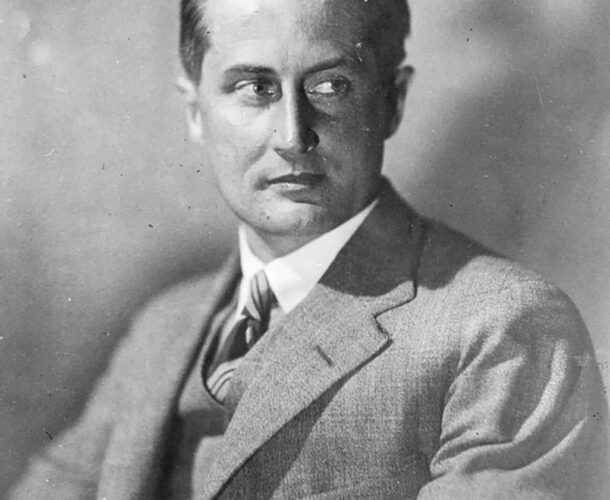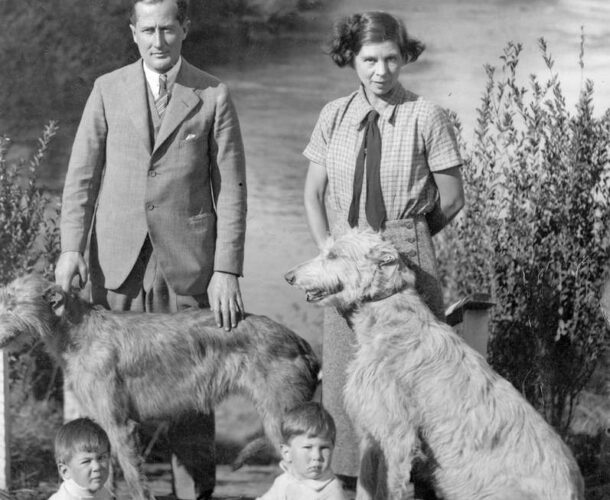In 1929, Dr Donald Thomson began working at the Walter and Eliza Hall Institute alongside Sir Neil Fairley and Dr Charles Kellaway to bring knowledge of Australian snakes and snake venoms up to the worldwide standard.
The work led to the production of antivenom, which was subsequently shown to be effective against both the tiger snake and the copperhead. Thomson spent much of his lifetime travelling deep into Australia’s remote and unexplored Aboriginal communities, studying and evolving as both a naturalist and an anthropologist.
Australia’s Lawrence of Arabia
Thomson looks every inch the swashbuckling figure conjured up by his description as Australia’s Lawrence of Arabia1. He was a journalist, naturalist, anthropologist, photographer, soldier, Aboriginal linguist and activist and, for a couple of years, a snake wrangler and venom researcher at the institute.
Sleeves rolled to his biceps, his trousers hitched up with a rough knot, he had the demeanour of a naturalist, as by all accounts he was, having kept a diary of field notes and collections of birds eggs since he was a small boy growing up in Melbourne. His nickname at Scotch College was Kanga.
Development of antivenom
Thomson brought his snake expertise back to Melbourne in 1929. His employment at the institute under Kellaway was relatively brief – two years – but significant. Thomson was part of a research effort that would define the young institute in the public imagination and provide the federal funding template that would underwrite its endeavours for decades to come.
At the urging of Fairley, Kellaway had embarked on a project to develop snake antivenom. While fatalities from snakebites were relatively rare – killing maybe dozens of Australians a year – public fear loomed large, and scientists and medicos successfully argued that a civilised country should invest in the capability to treat victims.
Dangerous liaisons
“The work in the 1928-43 period, led by Fairley and Kellaway, brought knowledge of Australian snakes and snake venoms up to and a little above the current level in most other countries where snake-bite was a practical problem,” Macfarlane Burnet wrote in his history of the first 50 years of the institute2. Thomson was a core player in that work.
Thomson himself was “dangerously bitten” while handling snakes, according to a report on the venom project for the Melbourne Argus in 19333. So too was Kellaway, “who sat at his desk for half an hour before antivenom arrived from the Commonwealth Serum Laboratories and he was treated, although it was not without suffering acute serum sickness.”
Thomson is credited with naming the snake in a paper published in 1933 as Oxyuranus scutellatus.
An outspoken campaigner
After leaving the institute, Thomson returned to Cape York, where he photographed and documented atrocities against Aboriginal people by mission authorities, and undertook (unsuccessfully) to expose them.
Thomson then travelled to north-east Arnhem Land to mediate in what was brewing as an ugly confrontation between authorities and Aboriginal communities there, writing regularly on his observations for the Melbourne Herald. He remained several years before travelling to Cambridge University to study on a Rockefeller Fellowship.
Returning to Arnhem Land before the war, Thomson headed a secret mission recruiting and training a reconnaissance force of Aboriginal people in preparation for the feared Japanese invasion. He was later badly injured in action in Dutch New Guinea.
After the war Thomson continued to publish articles agitating for justice for Aboriginal people, writing and researching Aboriginal culture throughout the 1950s and 1960s. He was the only anthropologist at the University of Melbourne through that era, and an outspoken campaigner against the rocket range at Woomera because of the threat it posed the people living there. He retired in 1968, and died in 1970.
A collection of 4000 of his black and white glass plate photographs of Aboriginal life is held by Museum Victoria. One of the photographs is said to be the inspiration for the acclaimed film Ten Canoes.







